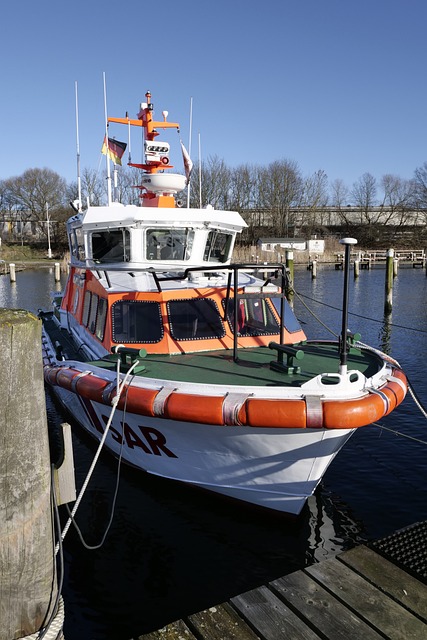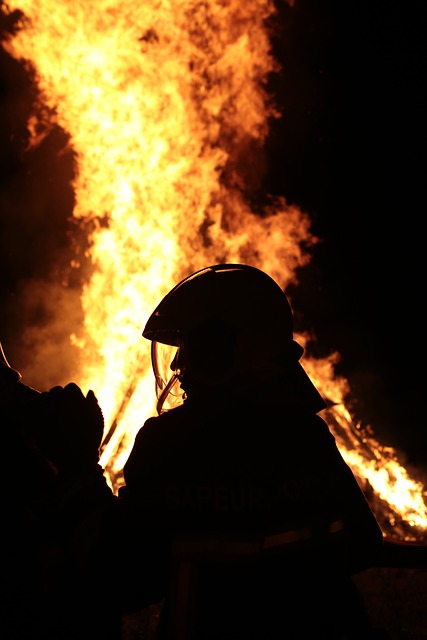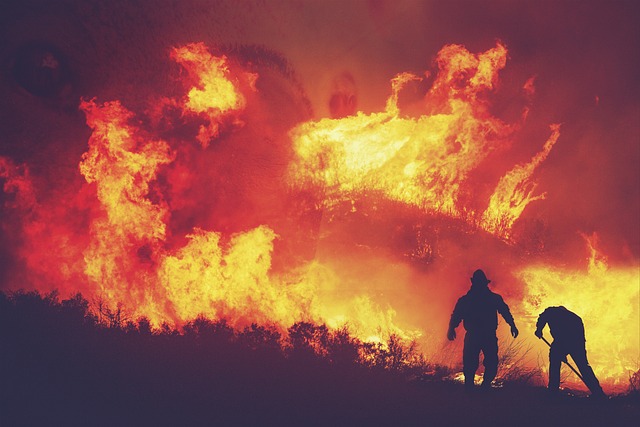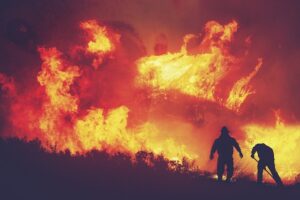
Flashlights for search and rescue (SAR) operations are essential tools that significantly enhance visibility, navigation, and precision in challenging environments. Their durability, adjustable intensity settings, and versatile beam patterns, which include both spotlight and floodlight capabilities, make them ideal for a variety of terrains and conditions. High-intensity LEDs provide powerful illumination, while energy-efficient settings extend battery life for extended searches. Advanced models may feature additional technologies like GPS, laser distance measurers, thermal or infrared imaging, and customizable beam profiles, further improving their utility in SAR operations. These devices are crucial for ensuring the safety and efficiency of rescuers, allowing them to adapt to different scenarios, from locating lost individuals in mountainous regions to finding survivors amidst rubble after natural disasters. The selection of a reliable flashlight with adjustable settings and spare batteries is paramount for successful SAR missions, where quick, precise action can be the difference between life and death. Flashlights For Search And Rescue Operations are not just tools; they are critical instruments that support the vital work of SAR teams in saving lives under difficult circumstances.
When disaster strikes, the race against time is critical for rescue teams. In this article, we illuminate the indispensable role of high-intensity flashlights in search and rescue (SAR) operations. From evaluating lumens and battery life to understanding features like durability, focus, and range, we delve into what makes a flashlight excel in SAR missions. We explore advanced technologies enhancing these beacons of light and the significance of beam patterns. Additionally, we offer best practices for nighttime operations, ensuring that every rescue team has the right tool at their disposal. Through case studies highlighting real-life success stories, “Flashlights for Search and Rescue Operations” is a guide to navigating the optimal flashlight for your SAR needs.
- The Role of High-Intensity Flashlights in SAR Missions
- Evaluating Lumens and Battery Life for Optimal Performance
- Features to Consider in a Rescue Flashlight: Durability, Focus, and Range
- Advanced Technologies in Search and Rescue Flashlights
- The Importance of Beam Patterns in SAR Flashlights
- Best Practices for Using Flashlights During Nighttime Operations
- Case Studies: Real-Life Success Stories of Flashlight Use in Rescue Missions
The Role of High-Intensity Flashlights in SAR Missions

High-intensity flashlights play a pivotal role in search and rescue (SAR) operations, serving as crucial tools for teams navigating through unpredictable environments to locate and aid individuals in distress. The penetrative beam of a high-intensity flashlight can illuminate dark spaces effectively, enabling rescuers to conduct thorough searches even in the most challenging conditions. These flashlights are designed with durability and reliability in mind, ensuring they function optimally when required most. Their high luminosity not only cuts through darkness but also enhances visibility during nighttime operations or in areas with low ambient light. The adjustable intensity settings of these flashlights allow SAR teams to conserve battery life by using a lower beam when searching wide areas and intensifying the light for pinpointed searches or when performing tasks that demand precise illumination, such as examining small spaces or objects. Additionally, the compact and robust design of high-intensity flashlights makes them versatile and easy to carry, which is essential when rescuers must travel over varied terrains and through tight spaces in pursuit of their mission. The integration of these flashlights into SAR missions significantly aids in the timely and safe recovery of individuals, showcasing their indispensable nature within the field of emergency response.
Evaluating Lumens and Battery Life for Optimal Performance

When selecting flashlights for search and rescue operations, evaluating lumens and battery life is paramount for optimal performance. Lumens, a unit of luminous flux, measure the amount of light produced by a source. In the context of rescue operations, high-lumen flashlights ensure that rescue teams can illuminate vast areas or focus a beam over long distances to locate individuals in need of assistance. The brightness level required will depend on various factors, including the environment and time of day. A flashlight emitting between 500 to 1000 lumens is often sufficient for general search operations, while models offering upwards of 2000 lumens can cut through total darkness or dense foliage, aiding in the visibility of potential victims or hazards.
Battery life is equally crucial, as rescue operations may extend beyond initial expectations. Rechargeable lithium-ion batteries are favored for their longevity and ability to maintain output throughout extended use. The runtime of a flashlight directly impacts its effectiveness in the field. Rescue teams should consider flashlights with battery indicators or those equipped with multiple power settings, including energy-saving modes that extend battery life when full brightness is not necessary. Additionally, carrying extra batteries or using models designed for continuous use can be critical when the stakes are high and every minute counts. Flashlights for search and rescue operations must meet rigorous standards of durability and reliability, ensuring that they function when most needed. The right balance between lumens and battery life will enhance a rescuer’s ability to navigate effectively and locate individuals with greater efficiency.
Features to Consider in a Rescue Flashlight: Durability, Focus, and Range

When selecting a flashlight for search and rescue operations, durability is paramount. The harsh environments that rescue teams often navigate require a light that can withstand drops, water exposure, and exposure to dust or sand without failing. A robust construction, typically featuring a hard-anodized aluminum body, ensures the flashlight remains operational even under strenuous conditions. This durability also means that the flashlight can be used repeatedly over time without a significant loss in performance.
In addition to durability, the focus and range capabilities of a flashlight are critical for effective search and rescue operations. A high-intensity beam with a concentrateable spotlight feature allows rescuers to illuminate distant objects or areas, which is essential for locating individuals in need of assistance. The ability to switch between flood and spotlights provides versatility; the flood setting offers a wide illumination area suitable for searching through dense vegetation or dark spaces, while the spotlight’s long-range capability is ideal for scanning expansive areas or pinpointing a target’s exact location. Flashlights designed specifically for search and rescue operations often come with adjustable focus mechanisms, enabling rescuers to tailor the beam to the task at hand, ensuring they can effectively navigate and illuminate any environment, from dark forests to open fields, during nighttime missions.
Advanced Technologies in Search and Rescue Flashlights

Modern flashlights for search and rescue operations have evolved significantly, incorporating advanced technologies that enhance their utility in high-stress environments. These sophisticated lighting tools are designed with durability and reliability as top priorities, ensuring they can endure the rigors of fieldwork. Equipped with high-intensity LEDs, these flashlights offer a brilliant lumen output capable of illuminating vast areas, which is crucial for locating individuals in need of assistance. Furthermore, features such as variable light settings allow users to conserve battery life by adjusting brightness levels as needed, from a soft glow suitable for preserving night vision to a dazzling beam for long-range signaling.
In addition to their superior lighting capabilities, these flashlights are often augmented with technologies like lasers for distance measurement and infrared or thermal imaging to detect heat signatures. Such capabilities prove invaluable when search and rescue teams operate under the cover of darkness or in environments where visibility is compromised. The integration of GPS technology within some models enables precise location tracking, which can be shared with command centers to coordinate rescue efforts effectively. These high-tech flashlights are not just tools; they are beacons of hope that guide rescuers through treacherous terrains and dense foliage, ultimately saving lives in the most challenging of situations.
The Importance of Beam Patterns in SAR Flashlights

In search and rescue (SAR) operations, the efficacy of flashlights is paramount for guiding teams through treacherous terrains and dense environments. The beam patterns emitted by SAR flashlights are a critical aspect that directly influences their utility in these scenarios. A well-designed beam pattern not only illuminates the path ahead but also ensures that every member of the team can see clearly without causing disorientation or glare. This is achieved through a focused beam that can be adjusted to floodlit areas with light or narrowed to pierce long distances, thereby allowing rescuers to navigate effectively in various conditions. The versatility of these beam settings is essential for SAR operations, as it enables teams to adapt their lighting needs based on the situation at hand—whether it’s a rapid response in an open area or a meticulous search within confined spaces. Flashlights For Search And Rescue Operations must prioritize beam patterns that are both focused and adaptable, providing rescuers with a reliable light source that enhances visibility while minimizing the potential for discomfort or distraction. Advanced technology in SAR flashlights now allows for customizable beam profiles, offering a balance between a long-reach spotlight and an area floodlight, thereby optimizing the performance of search and rescue teams under any circumstances.
Best Practices for Using Flashlights During Nighttime Operations

When conducting nighttime search and rescue operations, the use of flashlights is a critical component in ensuring both the safety of the team and the effectiveness of the mission. Flashlights for search and rescue operations should be robust, reliable, and equipped with high-intensity LEDs to illuminate dark environments effectively. It’s imperative to select flashlights that offer adjustable beam intensities and focus, allowing rescuers to conserve battery life by using a lower setting when visibility permits or a brighter beam in areas of dense shadow or complete darkness.
Best practices for using flashlights during these operations include training all team members on the correct handling and usage of the devices. This includes understanding the different modes, maintaining proper grip to prevent accidental switching of modes or activation, and ensuring that the flashlight’s lens is clean for optimal light transmission. Teams should establish communication protocols that account for visual signals when visibility is low. Flashlights should be used in a manner that does not blind fellow team members or hinder their night vision. Additionally, it’s crucial to carry extra batteries and consider flashlights with charging capabilities to avoid power depletion mid-operation. Strategic placement of lights, such as creating an ‘X’ pattern when searching for individuals, can enhance search efficiency. By adhering to these best practices, search and rescue teams can maximize the benefits of their flashlights, ensuring operations run smoothly under the cover of darkness.
Case Studies: Real-Life Success Stories of Flashlight Use in Rescue Missions

Flashlights have been indispensable tools for search and rescue (SAR) operations, particularly during nighttime or low-visibility conditions. A notable case study involves a recent mountain rescue where a high-intensity flashlight enabled rescuers to quickly locate a lost hiker who had wandered off the trail in the dark. The beam from the flashlight cut through the dense foliage and fog, providing a clear path for the rescuers to navigate treacherous terrain with precision and speed. The efficiency of this operation underscores the critical role that quality flashlights play in SAR missions, where every second counts.
In another instance, during a complex urban search and rescue (USAR) mission following a natural disaster, flashlights equipped with advanced lighting technology proved instrumental in locating survivors trapped under rubble. The focused beams allowed rescuers to illuminate narrow spaces and crevices, facilitating the detection of faint signs of life. This real-life success story highlights the importance of reliable lighting in SAR operations, as it can significantly enhance the effectiveness of rescue teams in high-stress, time-sensitive scenarios. Flashlights for search and rescue operations are more than mere tools; they are vital instruments that contribute to successful outcomes in missions where visibility and precision are paramount.
In the realm of search and rescue operations, flashlights for search and rescue operations have evolved into critical tools that significantly enhance the efficiency and success of missions. This article has explored the multifaceted role of high-intensity flashlights, evaluating key factors like lumens and battery life to ensure optimal performance in challenging environments. We’ve delved into the essential features—durability, focus, and range—that are indispensable for rescue teams navigating unpredictable terrains. The integration of advanced technologies has further refined search and rescue flashlights, particularly with the importance of beam patterns that can penetate darkness effectively. Best practices for using these devices at night have also been outlined to maximize their utility. Through case studies that highlight real-life success stories, it’s evident that the right flashlight can make a profound difference in saving lives. These tools are more than just light sources; they are beacons of hope and indispensable assets for those who risk their lives in the pursuit of safety and salvation.







